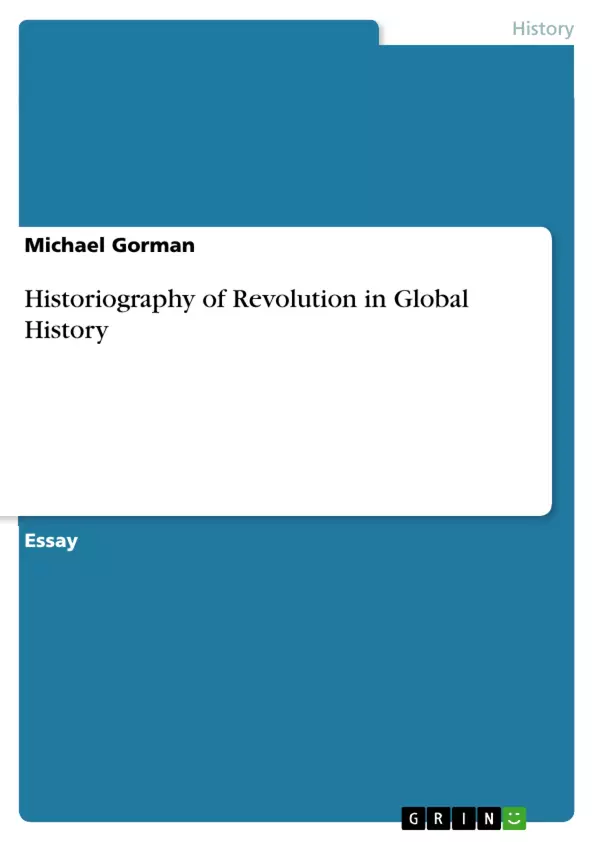Revolution was a key feature of the late-18th through mid-19th centuries, at a turning point in the history of humanity, the common folk of nations sought liberty and equality in the form of socio-political reform of class and race, which is the common interpretation. As humanity began to swing toward modernity in this crucial period, shared ideas spread during the age of enlightenment, equality in politics, the legal system, and cultural reform embroiled entire nations in fluid conflicts.
Inhaltsverzeichnis (Table of Contents)
- Revolution and its End Goal
- The French Revolution
- The Narrative of Conflict
- The Role of Society
- The Changing Course of Revolution
- The Execution of King Louis XVI
- The Monarchy as the Bond of Social Order
- The Taiping Heavenly Kingdom
- The Rise of the Taiping Heavenly Kingdom
- The Taiping Rebellion
- The Fall of the Taiping Heavenly Kingdom
- The American Revolution
- The Road to Revolution
- The Revolutionary War
- The Founding of the United States
Zielsetzung und Themenschwerpunkte (Objectives and Key Themes)
This work explores the historiography of revolution in global history, examining how different historians have interpreted and analyzed revolutions throughout the late 18th to mid-19th centuries. The authors, focusing on specific revolutions in France, China, and the United States, provide insights into the evolution of revolutions, their underlying causes, and their enduring consequences.
- The nature and evolution of revolution as a dynamic and fluid process
- The role of societal factors and social change in revolutions
- The impact of political power struggles and shifting alliances on the course of revolution
- The influence of historical context and prevailing ideologies on the interpretation of revolution
- The importance of compromise and concession in the survival and outcomes of revolutions
Zusammenfassung der Kapitel (Chapter Summaries)
The text examines the French Revolution from multiple perspectives. David Andress's analysis challenges conventional interpretations by shifting focus from class struggle to the wider societal context, highlighting the fluid and complex nature of revolutionary change. He emphasizes how the revolution evolved, driven by various factions and shifting alliances, leading to a departure from its initial goals.
Lynn Hunt explores the French Revolution through the lens of individual experiences, particularly the impact of revolutionary events on family structures and relationships. She highlights the symbolic significance of the execution of King Louis XVI and the shifting perceptions of the monarchy's role in society.
Thomas H. Reilly's chapter examines the Taiping Heavenly Kingdom in China, detailing the rise, development, and eventual downfall of this religious-based rebellion. He analyzes the socio-political and cultural forces that fueled the Taiping rebellion, highlighting the complex interplay of religious beliefs, social unrest, and political aspirations.
Alan Taylor, in his exploration of the American Revolution, traces the complex process of colonial resistance and the ensuing war for independence. He emphasizes the intertwined forces of Enlightenment ideals, political tensions, and economic factors that fueled the revolution and the eventual creation of a new nation.
Schlüsselwörter (Keywords)
This work delves into the historiography of revolution, focusing on key concepts such as social change, political power struggles, societal dynamics, and historical context. The text explores the French Revolution, the Taiping Heavenly Kingdom, and the American Revolution, highlighting the unique features and complexities of each revolution.
- Quote paper
- M.A. Michael Gorman (Author), 2022, Historiography of Revolution in Global History, Munich, GRIN Verlag, https://www.grin.com/document/1243615



